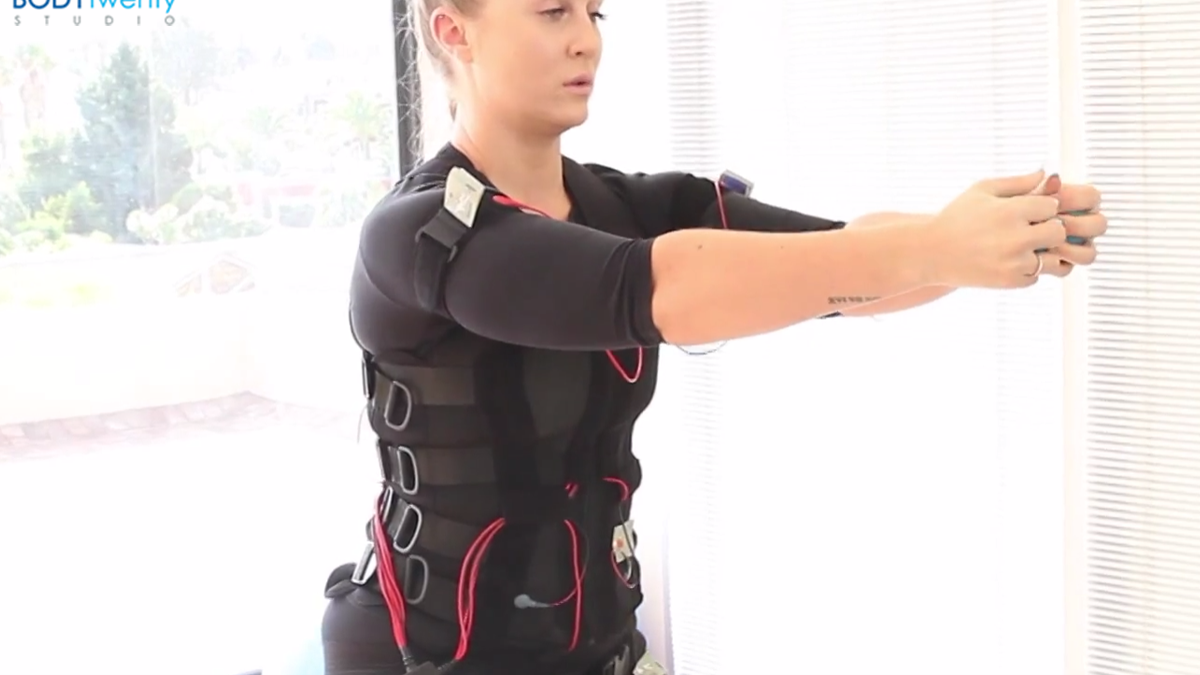
This New Muscle-Building Method Promises Gain with Little Pain
October 26, 2017
Some Common Misconceptions About Muscle Toning
October 26, 2017Muscle Electrical Stimulation
Muscle Growth Stimulated in Response to External Electrical Stimulation
All muscle movements, whether voluntary or not, as in the use of the biceps, pecs, glutes and abs when exercising, or involving involuntary actions such as peristalsis, heartbeat and unconscious blinking, are the direct result of electrical stimulation by the nervous system. For a muscular contraction to occur naturally, it requires an impulse of sufficient potential to be delivered by a motor neurone – the type of nerve cell responsible for initiating movement rather than to provide sensory input, such as touch or pain. When elevated above its resting state, the higher charge on the fibres that make up the muscular tissue initiates a series of reactions involving calcium ions and ATP. These reactions form chemical linkages between the various fibrous components. The newly-formed bonds draw fibres together, leading to an overall shortening effect, which then presents as a muscular contraction.
People choose to exercise for a variety of reasons. While some, most often male subjects, may be intent upon developing the kind of bulk that one tends to associate with bodybuilders and Olympic weightlifters, others just want to burn off some excess fat and regain a more sculpted physique, without building too much additional muscle. Most often, it is this latter option that tends to be the goal of female subjects.
While the programmes required to achieve these alternate ends differ, for either to be successful, it is necessary to continue exercising, whether through sustained or repeated efforts, to the point where muscular fatigue sets in. When using conventional resistance training, many subjects are inclined to avoid any excess discomfort and will often give up before reaching this point. The result is that even those who continue with their exercise regimens make slow progress, and it takes so long to arrive at the desired results that disappointment leads many to abandon their efforts prematurely.
In practice, it is quite possible to subject muscle tissue to the same treatment without ever lifting a weight or struggling to perform abdominal crunches. Not only can your body’s nervous system provide the electrical stimulation that is required to initiate muscular contraction, but it is also possible to achieve the same effect involuntarily by the application of carefully-positioned, pulsed charges generated by sources external to the body. These involuntary contractions simulate the effect of conventional resistance training and may be continued until that crucial point of fatigue is attained, without taxing the subject unduly.
The currents applied in the techniques, which is usually referred to as EMS or electro-muscular stimulation, are slightly higher than those generated naturally by the nervous system. The charges are applied via the skin by means of electrodes positioned immediately above the targeted muscles. In addition, the duration, the interval between pulses and the charge used during electrical stimulation can be controlled by the trainer to ensure both the safety of the subject and the efficiency of the treatment. This facility makes it possible to tailor programmes to the match the capabilities and the goals of each subject individually.
EMS sessions can achieve results that could take five times longer with conventional resistance training. Visit a Body20 studio to discover how you could build a new body in just 20 minutes per week.

